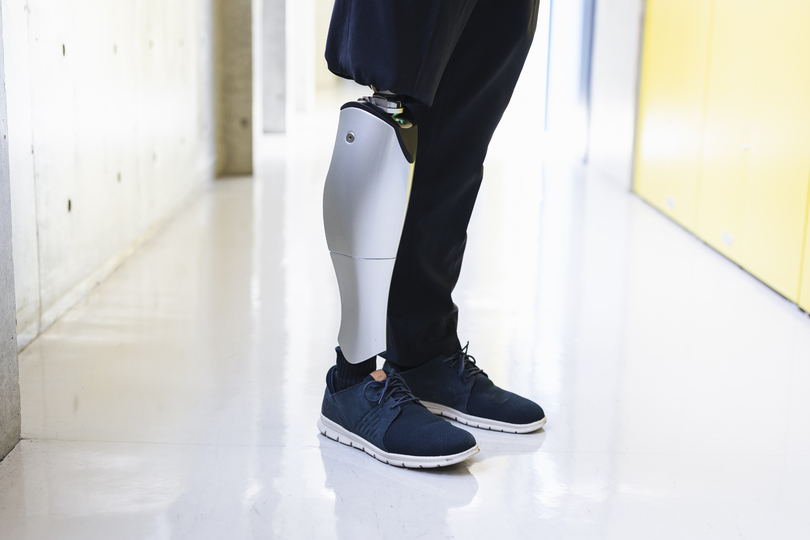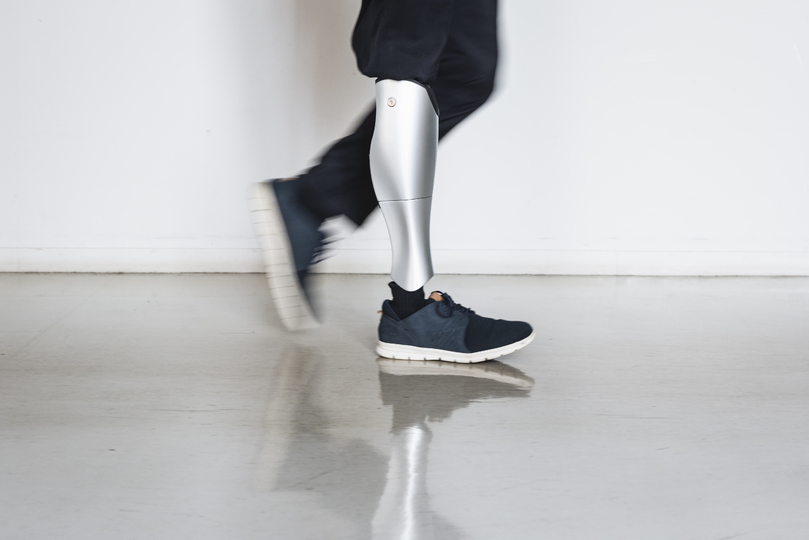Technologies
Discover, Connect & Collaborate at TECHINNOVATION 2021
Innovative Motorized Prosthetic Leg
Technology Overview
At present, 70% of lower limb amputees are aged 60 years or older, and 70% of lower limb amputees suffer from chronic diseases such as diabetes. It is reported that a lower limb is lost to diabetes every 30 seconds in the world. The number of amputees will continue to increase given the rising incidence of diabetes. This calls for the need for better maintenance and improvement to the amputees’ Quality of Life (QoL).
Prosthesis offerings in the global market are primarily manual in operations, with 99% of them being non-powered prostheses. Users have numerous complaints such as being tired easily, fear of falling, and not being able to walk gracefully. Since existing prosthetic legs cannot assist the motion of people in their daily lives, amputees with muscle weakness including the elderly are unable to use the non-powered prosthesis due to huge physical burden stemming from the lack of body strength.
The company aims to improve the QoL of more than 10 million amputees in the world by providing highly functional robotic prosthesis and amputees developed based on its in-house humanoid robotics technology. The technology provides motion assistance and natural movement which help amputees’ mobility and overcomes the problems of non-powered prostheses.
With its current developmental focus on product size and weight reduction, and operating noise minimization while maintaining a long-last battery life, the company is seeking for collaborative partners who have expertise in small and noiseless actuators, as well as small high-capacity rechargeable battery.
Technology Features, Specifications and Advantages
The technology comprises highly functional robotic prostheses with the following technological features:
- Actuator: A proprietary muscle-mimicking mechanism that enables the drive structure to deliver high torque despite its small size
- Control algorithm: A control algorithm that accurately senses human motion and follows the motion to reproduce the natural motion of the prosthesis
- Electrical control technology that controls large currents and enables high power output while increasing battery life through power regeneration
These technological features can provide the following advantages:
- Power to Assist: Utilizing humanoid robotics technology, user's movement is detected by sensors, and a control for reproducing a natural movement makes it possible to move beautifully. It also can assist motions which requires high body strength, such as standing up from chair and stairs ascent/descent. With this, amputees can improve their mobility tremendously. This in turn helps them to become socially independent while reducing physical and financial burden.
- Quantify the Data: The technology’s sensors can also help to quantify the several parameters. Once an amputee wears our prosthesis, it can quantify personal data, such as Weight Balance, Walking Speed and Stride Length. This will also suggest adequate setting to prosthetist with these quantified data. This information can serve to complement activities of prosthetists to make appropriate adjustments and users can enjoy shorter rehabilitation.
Potential Applications
The technology directly relates to prosthetic legs. The company has immediate aims to commercialize the technology as a high-performance prosthetic leg device.
In the medium term, the technology will be applied beyond the current application for lower limb amputation to cover:
(i) Orthotics for supporting people with lower limb disabilities
(ii) Wearable devices to assist elderly people with muscle weakness to walk
(iii) Power-assisted suits to support heavy labor
Customer Benefit
The company aims to create economic and social impact by developing highly functional prosthetic legs. Improving the mobility of amputees will help improve their QoL. This means amputees and their family can reduce physical and financial burden. On a broader picture, with amputees regaining independence to live happier and healthier lives, this also helps to alleviate the burden on the society including public’s financial burden for supporting care insurance. The technology can also enhance the work environment and operations of prosthetists with the functionality of date-driven adjustments for simplifying their tasks in rehabilitation.
The most important thing is that the highly functional prosthetic leg can transform people’s perception towards the amputees. Currently, amputees are recognized as the disabled due to the limitation in their mobility with low function prosthetic leg. However, once amputees’ mobility is improved to mirror lives of able-bodied people, the public’s perspectives can be changed. The technology aspires to overcome social stigma associated with prosthesis, like how glasses were transformed from a medical prescription point of view for eyesight correction to the generic adoption of glasses as fashion accessory.

